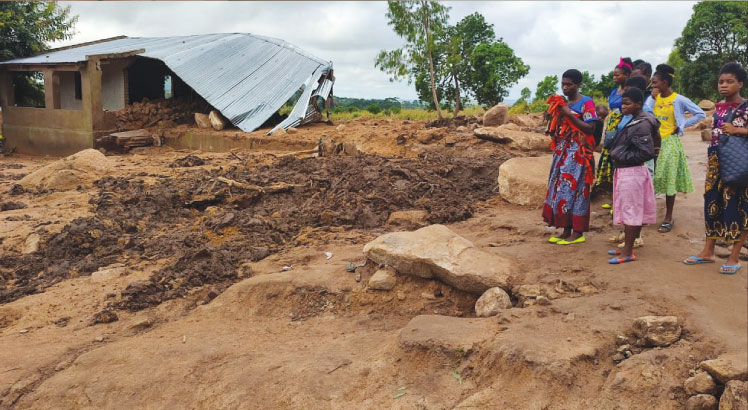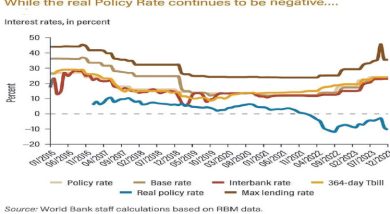Incomes, earnings continue to shrink
A development economist Dalitso Kabambe says the slow growth that Malawi is facing means shrinking incomes and earnings for both businesses and households as the economy is failing to create the much needed jobs.
Kabambe, who is also former Reserve Bank of Malawi Governor said this following Minister of Finance and Economic Affairs Sosten Gwengwe’s admission in Parliament that destruction caused by Cyclone Freddy in the Southern Region will affect the growth projection which was pegged at 2.7 percent in 2023, primarily because of the huge loss on agriculture, infrastructure and other economic activities.

He observed that unfortunately, this is now a new normal in Malawi since 2020 where population growth is far outstripping economic growth.
He said: “While population growth has averaged 2.4 percent annually since 2020, economic growth has remained stagnated and subdued at a paltry 1.6 percent meaning that per capita income earnings by Malawians have been squeezed and shrinking since 2020.
“On the flip side, while earnings are shrinking, commodity prices and cost of living have both been soaring and biting hard meaning that the suffering Malawians are currently going through will simply persist and get worse thereby relegating more Malawians deep into the abyss of poverty with no hope.”
Kabambe said the slow growth means that the country will fail to achieve the aspirations of the Agenda 2063 of becoming a middle income country by 2030 as the Agenda 2063 proposes growth rates of no less than 6 percent annually to turn the country into a middle income nation by 2030.
However, the economic growth rate has averaged 1.6 percent since 2020 meaning that for the past four consecutive years, the country is failing to achieve its development aspiration.
“At the pace the country is going, the country will not meet its aspiration. The Agenda 2063 dream has flopped from its infancy just like its predecessor, the Vision 2020. Instead of creating wealth as envisaged in the Agenda 2063, the country is busy breeding poverty,” he said.
Last week, the World Bank slashed 2023 Malawi’s growth projection to 1.6 percent from the three percent earlier projected.
The growth rate is also 1.1 percent below the government’s 2.7 percent growth rate and 4.4 below the recommended six percent growth rate required to achieve sustainable growth.
In 2022, economic growth was estimated at 1.2 percent; a recession from the 4.6 percent registered in 2021.
Adverse weather conditions affected the 2021/22 agriculture growing season resulting in less production compared to the previous years.
Last week, Reserve Bank of Malawi (RBM) painted a gloomy picture on the economic prospects for the country due to the impact of Tropical Cyclone Freddy.
He said: “In 2023, real gross domestic product [GDP] is expected to rebound and grow by 2.7 percent from 1.2 percent.
“However, the projection will be revised to incorporate effects of Cyclone Freddy.”
Malawi’s economy has been significantly weakened by a series of exogenous shocks and persistent macro-fiscal imbalances.
In 2022, World Bank projects growth to decline to 0.9 percent from 2.8 percent in 2021, with lower agricultural output, erratic electricity supply, foreign exchange shortages affecting importation of raw materials, and high global commodity prices.





